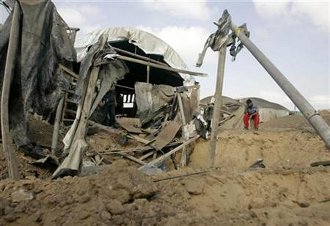The Gaza Strip is just 139 square miles. It’s hard to appreciate just how small that is. Particularly when, for the vast majority of the 1.5 million Palestinians living inside, the outside world may as well be another planet, forever locked off behind walls and a naval blockade.
 It’s a grim life for most. Rampant unemployment and malnutrition, poor access to health care. Occasional Israeli air strikes, and outbursts of violence between the ruling Hamas faction and smaller Islamist groups. The local zoo has a pair of donkeys painted with stripes, a sad attempt to replace the zebras which died during the January invasion.
It’s a grim life for most. Rampant unemployment and malnutrition, poor access to health care. Occasional Israeli air strikes, and outbursts of violence between the ruling Hamas faction and smaller Islamist groups. The local zoo has a pair of donkeys painted with stripes, a sad attempt to replace the zebras which died during the January invasion.
The world’s harshest blockade is also a major government intervention on what would be the enclave’s natural economy, and like so many other such interventions, a natural source of economic bubbles.
In this case, the bubble came in the form of tunnel investment. Tunnels are the only way to get virtually anything into Gaza, apart from intermittant shipments of humanitarian aid. They can also be incredibly lucrative, bringing things as large as automobiles to the few wealthy Gazans who can afford it.
The lure of big money led thousands of speculators to pump money into digging more tunnels, and the Israeli carpet bombing of the region along the Egypt border saw paper assets estimated as high as a half a billion dollars wiped out overnight.
It’s a different world in Gaza, but maybe not so different as you might think. Facing growing anger from the investors the Hamas government is scrambling to bail them out and looking to blame lack of regulation for the bubble. Some things are the same no matter where you are.


